Abstract
Horse spleen ferritin was found to bind aluminium poorly after equilibrium dialysis with buffered aluminium citrate solutions. Not more than 10 aluminium atoms/ferritin molecule were bound from a 25 microM-aluminium solution, pH 7.4, and the degree of binding was dependent on the method used to prepare the aluminium citrate solution. Up to 120 aluminium atoms/molecule were bound when ferritin iron cores were reconstituted by the addition of 3000 Fe atoms to apoferritin in the presence of aluminium citrate. Comparison of previously published binding constants of ferritin and citrate for aluminium suggests that, in the cell, the prevalence of small ligands effectively prevents the association of large amounts of aluminium with ferritin.
Full text
PDF
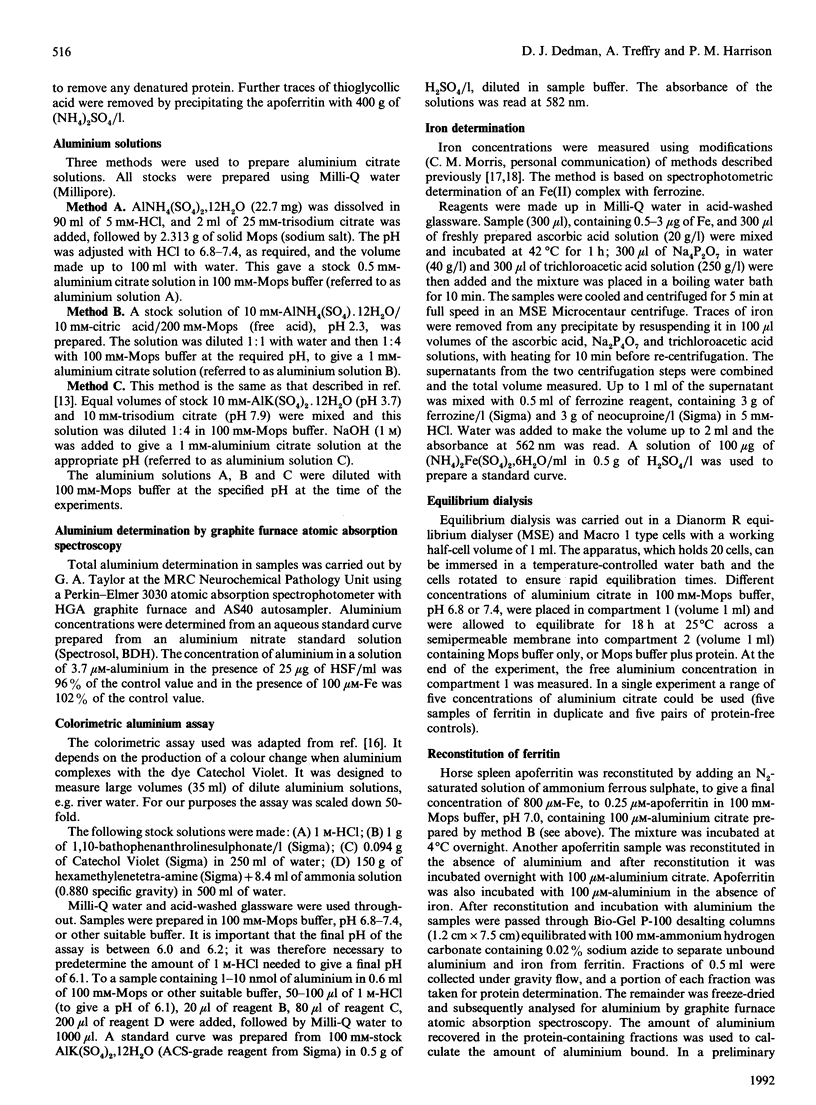
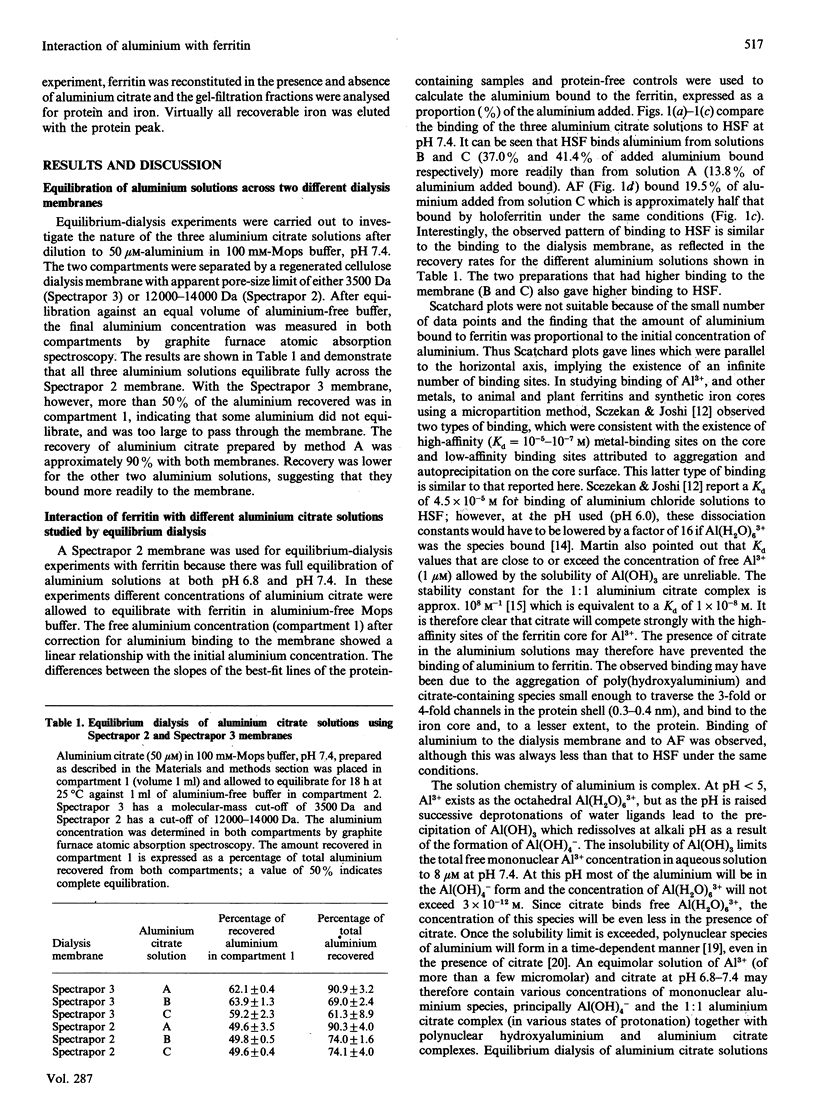
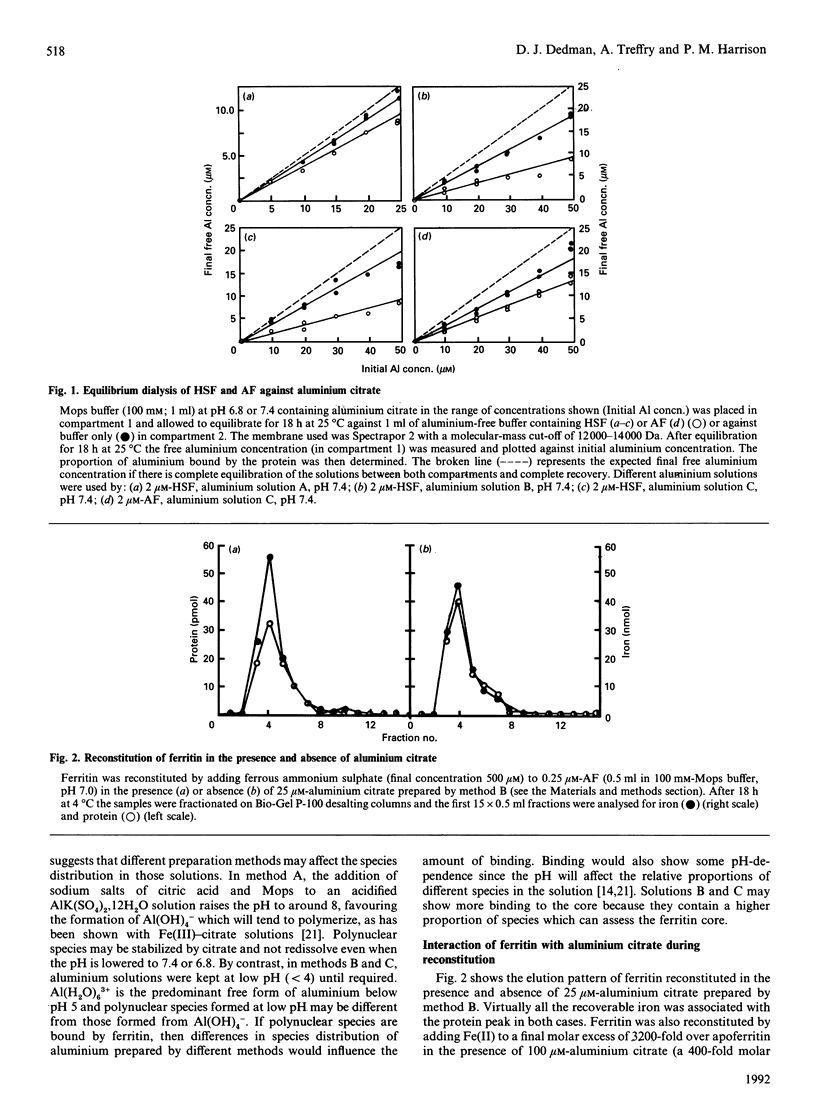
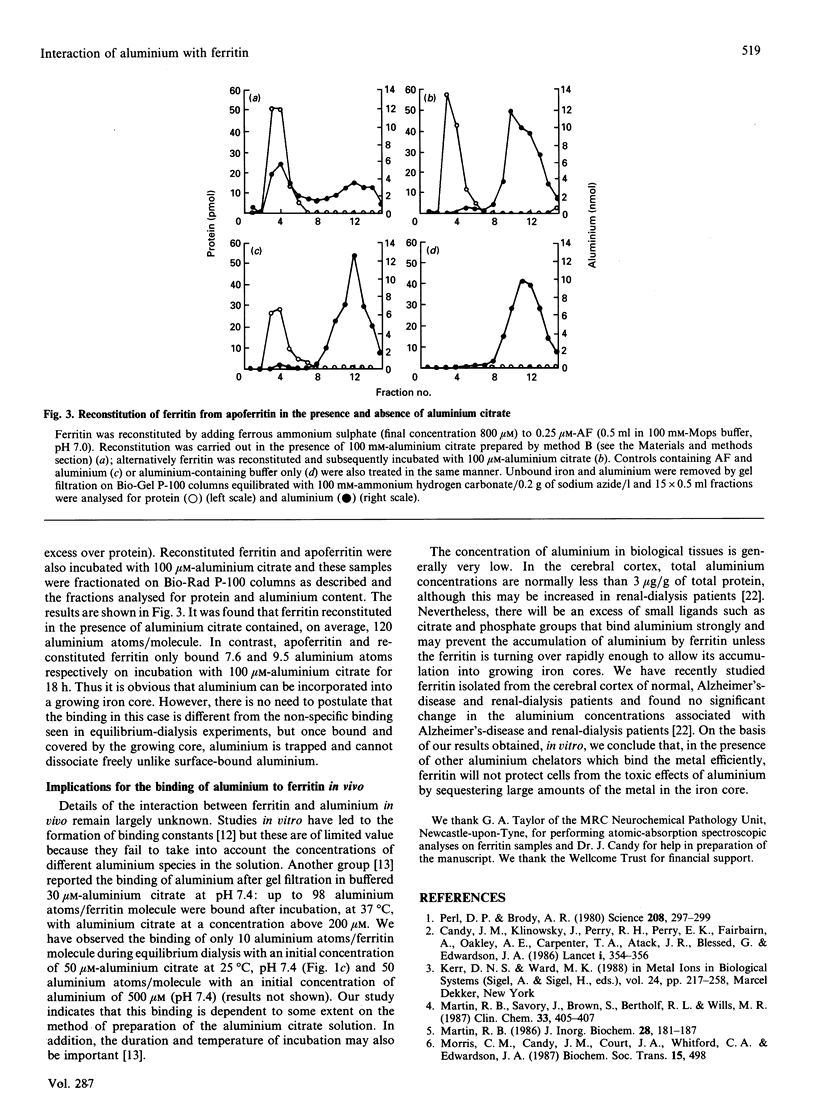
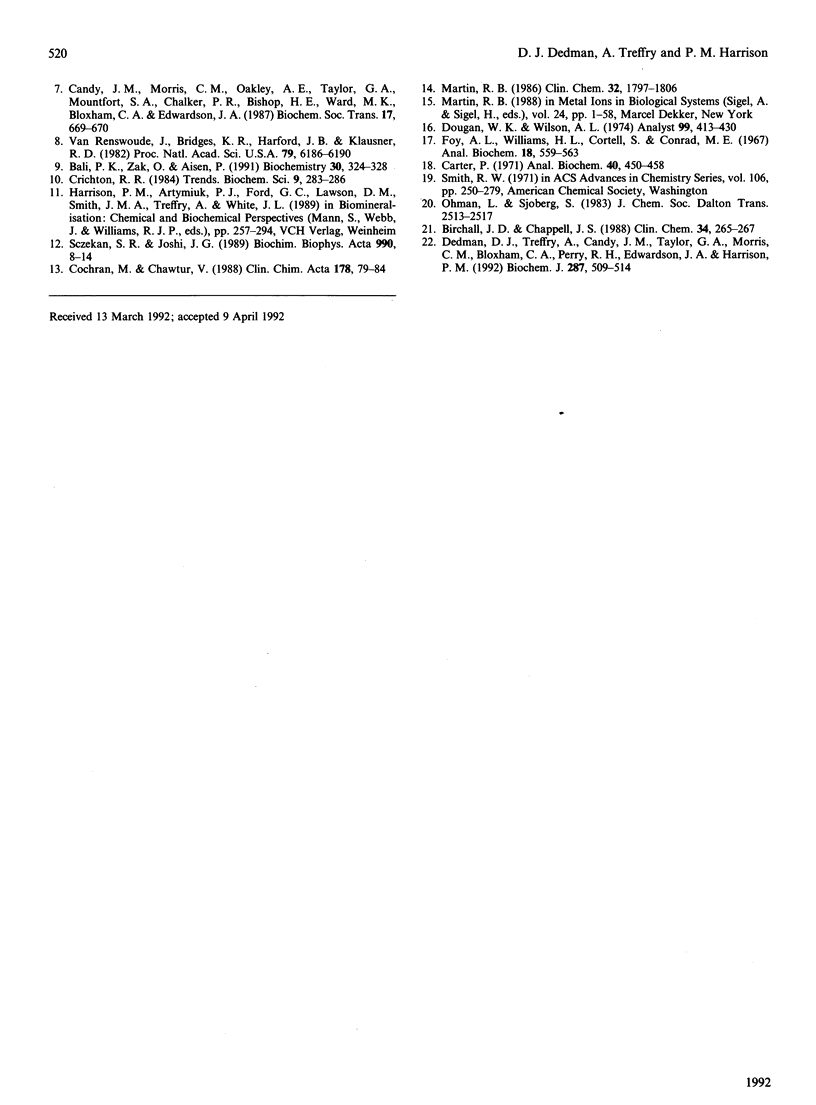
Selected References
These references are in PubMed. This may not be the complete list of references from this article.
- Bali P. K., Zak O., Aisen P. A new role for the transferrin receptor in the release of iron from transferrin. Biochemistry. 1991 Jan 15;30(2):324–328. doi: 10.1021/bi00216a003. [DOI] [PubMed] [Google Scholar]
- Birchall J. D., Chappell J. S. The chemistry of aluminum and silicon in relation to Alzheimer's disease. Clin Chem. 1988 Feb;34(2):265–267. [PubMed] [Google Scholar]
- Candy J. M., Oakley A. E., Klinowski J., Carpenter T. A., Perry R. H., Atack J. R., Perry E. K., Blessed G., Fairbairn A., Edwardson J. A. Aluminosilicates and senile plaque formation in Alzheimer's disease. Lancet. 1986 Feb 15;1(8477):354–357. doi: 10.1016/s0140-6736(86)92319-6. [DOI] [PubMed] [Google Scholar]
- Carter P. Spectrophotometric determination of serum iron at the submicrogram level with a new reagent (ferrozine). Anal Biochem. 1971 Apr;40(2):450–458. doi: 10.1016/0003-2697(71)90405-2. [DOI] [PubMed] [Google Scholar]
- Cochran M., Chawtur V. Interaction of horse-spleen ferritin with aluminium citrate. Clin Chim Acta. 1988 Nov;178(1):79–84. doi: 10.1016/0009-8981(88)90271-9. [DOI] [PubMed] [Google Scholar]
- Dedman D. J., Treffry A., Candy J. M., Taylor G. A., Morris C. M., Bloxham C. A., Perry R. H., Edwardson J. A., Harrison P. M. Iron and aluminium in relation to brain ferritin in normal individuals and Alzheimer's-disease and chronic renal-dialysis patients. Biochem J. 1992 Oct 15;287(Pt 2):509–514. doi: 10.1042/bj2870509. [DOI] [PMC free article] [PubMed] [Google Scholar]
- Dougan W. K., Wilson A. L. The absorptiometric determination of aluminium in water. A comparison of some chromogenic reagents and the development of an improved method. Analyst. 1974 Jul;99(180):413–430. doi: 10.1039/an9749900413. [DOI] [PubMed] [Google Scholar]
- Martin R. B. Citrate binding of Al3+ and Fe3+. J Inorg Biochem. 1986 Oct-Nov;28(2-3):181–187. doi: 10.1016/0162-0134(86)80081-2. [DOI] [PubMed] [Google Scholar]
- Martin R. B., Savory J., Brown S., Bertholf R. L., Wills M. R. Transferrin binding of Al3+ and Fe3+. Clin Chem. 1987 Mar;33(3):405–407. [PubMed] [Google Scholar]
- Martin R. B. The chemistry of aluminum as related to biology and medicine. Clin Chem. 1986 Oct;32(10):1797–1806. [PubMed] [Google Scholar]
- Perl D. P., Brody A. R. Alzheimer's disease: X-ray spectrometric evidence of aluminum accumulation in neurofibrillary tangle-bearing neurons. Science. 1980 Apr 18;208(4441):297–299. doi: 10.1126/science.7367858. [DOI] [PubMed] [Google Scholar]
- van Renswoude J., Bridges K. R., Harford J. B., Klausner R. D. Receptor-mediated endocytosis of transferrin and the uptake of fe in K562 cells: identification of a nonlysosomal acidic compartment. Proc Natl Acad Sci U S A. 1982 Oct;79(20):6186–6190. doi: 10.1073/pnas.79.20.6186. [DOI] [PMC free article] [PubMed] [Google Scholar]


